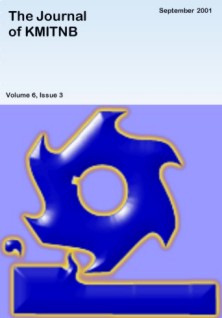ThaiScience
ThaiScience
THE JOURNAL OF KMUTNB
Volume 32, No. 04, Month OCTOBER, Year 2022, Pages 966 - 977
Bioaccessibility of sea grape (caulerpa lentillifera) in simulated human digestive system in vitro digestion model
Numphon Thaiwong, Natta Kachenpukdee, Dararat Buaphet
Abstract Download PDF
The objective of this study was to determine the bioaccessibility of C. lentillifera (sea grapes) in vitro digestion model. In vitro simulated digestion model was examined for the stability of total phenolic contents and antioxidant activity after C. lentillifera digestion. The proximate analysis, total phenolic content and antioxidant activity of fresh- and dried sea grapes were considered in this study. The bioaccessibility of fresh sea grapes was evaluated from total phenolic content and antioxidant activities. The results showed that the moisture, crude protein, fat and ash were about 82.63, 3.89, 1.27 and 12.21%, respectively. The dried sea grape was reported by 2.29% of moisture, 19.76% of crude protein, 0.63% of fat, and 31.48% of ash. The total phenolic contents of fresh and dried sea grapes were indicated about 38.10 ± 3.00 mg GAE/g sample and 3.50 ± 0.51 mg GAE/g sample, respectively. The antioxidant activity of fresh sea grapes was about 5.90 ± 0.82% by DPPH method and 13.82 ± 0.22% of ABTS method. The antioxidant values by DPPH and ABTS methods were shown at 1.93 ± 0.31% and 2.11 ± 0.13%, respectively. The evaluation of bioaccessibility of C. lentillifera in Simulated Human Digestive System in vitro digestion model revealed that the stability of total phenolic contents and antioxidant activities decreased significantly (p < 0.05) in relation to the increase of C. lentillifera contents in the range of 2–8 g.
Keywords
C. Lentillifera; in vitro Digestion Model; Stability; BioaccessibilityTHE JOURNAL OF KMUTNB
Published by : King Mongkut's University of Technology North Bangkok
Contributions welcome at : http://www.journal.kmutnb.ac.th
